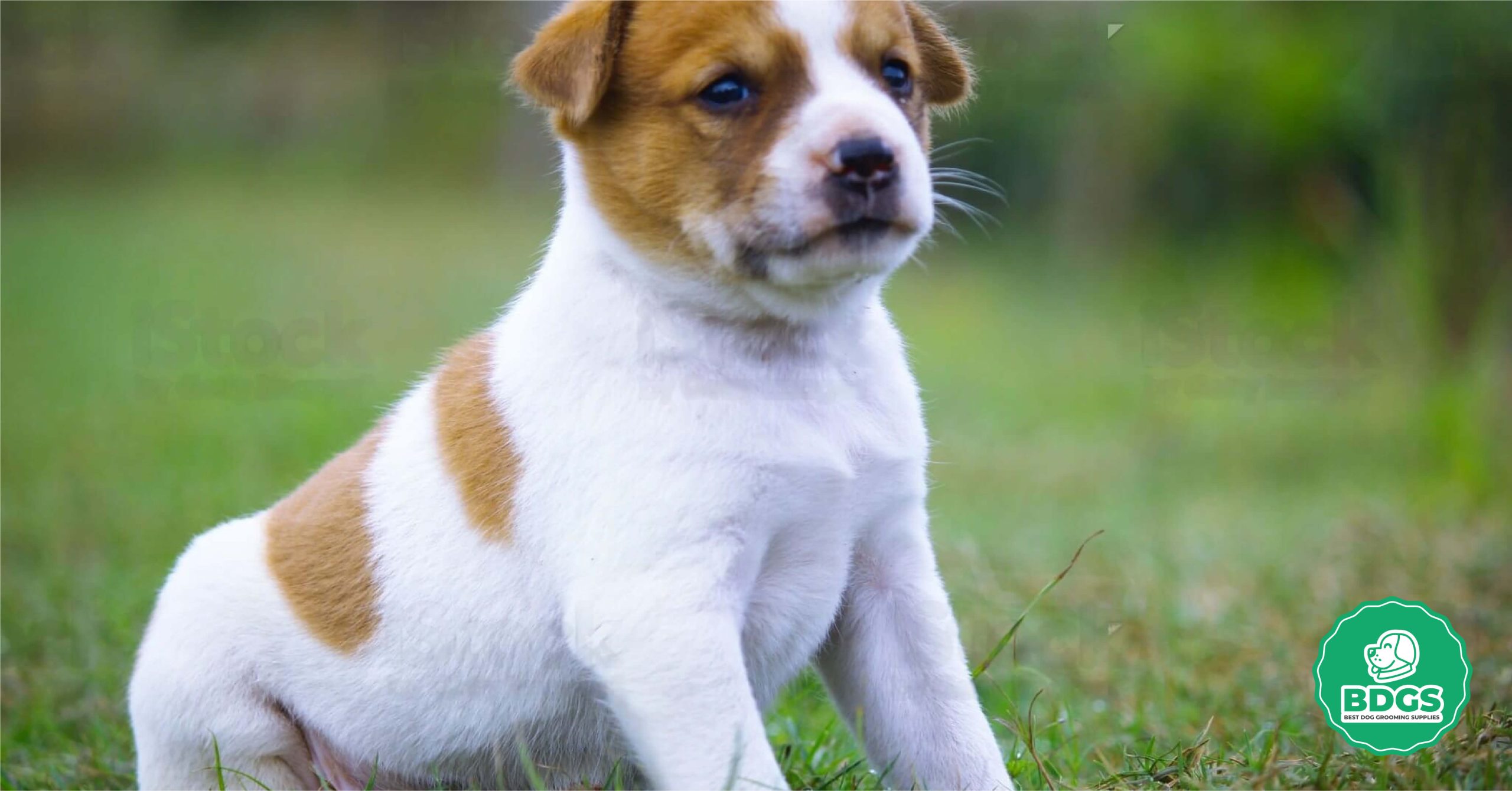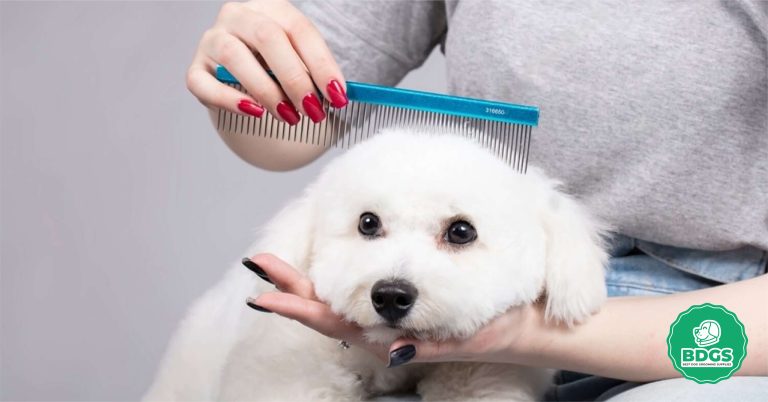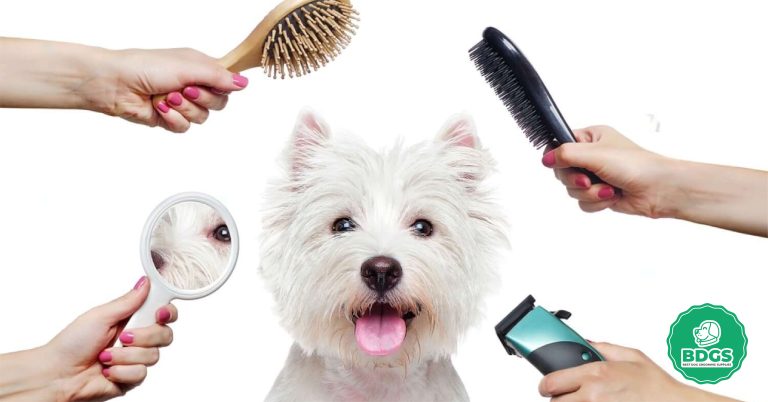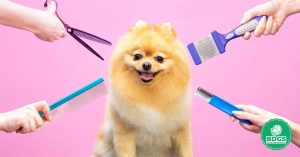When it comes to dogs pooping in the house, it’s essential to train them in a good and kind way. In times of anger, it might be tempting to use punishments, but these methods can be harmful and useless in the long run. Instead, the best way to solve the problem is to figure out why the dog pooping inside.
Dogs may act this way for several reasons, including health problems, nervousness, insufficient training, or changes in their surroundings. When we approach a problem with care and patience, we can get to know our pet friends better and help them learn in a safe, caring setting.
By using positive feedback methods, like rewarding good behavior and being consistent with training, we can teach our dogs how to go to the bathroom and build a loving, trusted relationship built on mutual respect.
Establish a Consistent Routine
Setting up a pattern is essential for your dog’s health and can help you live together more peacefully. Start with a regular meal time to make a habit that works. Feeding your dog simultaneously every day helps keep his stomach in check and keeps him from having accidents inside.
Plan regular bathroom breaks, especially after meals and when you wake up. It helps your dog know when and where to go to the bathroom. Also, pay attention to how your dog usually goes to the bathroom.
Dogs often show minor signs of needing to go to the bathroom, like sniffing or pacing. If you pay attention to these signs, you can figure out what they need and stay out of trouble. The key to good training is consistency.
With care and positive feedback, your dog will quickly learn the routine, making him a happy and healthy pet.
Create a Designated Outdoor Bathroom Area
Setting up an outdoor bathroom place for your dog is a great way to teach it how to use it properly. Start by picking a spot in your yard that is easy to get to and where your dog can go to go potty. It helps them connect that specific place with going to the bathroom. When your dog pooping outside, praise, treats, or love are all good things to do as a reward, this supports their good behavior and makes them more likely to use the open area often.
During training, accidents can happen, but you should never scold your dog for going inside. Instead, clean up mistakes inside with enzyme cleaners that are made to eliminate smells. Standard cleaning products might not eliminate the smell, which could cause it to happen again in the same place.
With time, stability, and praise, your furry friend will learn to go to the bathroom in the marked outdoor area. It will make your home better and happy for both of you.
Recognize Signs of Impending Indoor Dog Pooping
To avoid problems and help your dog learn how to use the bathroom outside, you must be able to tell when your dog is about to pooping inside. Keep an eye out for minor signs that your dog needs to go. They might be looking for a place to go to the bathroom if they are restless and sniffing around more than usual. Watch for rapid changes in behavior or nervousness after a meal or when they wake up.
Also, it can be beneficial to take the time to learn about your dog’s unique habits before it pooping. Some dogs might get more nervous or try to find a quiet place to be alone, while others might pace or whine. By learning their signs, you’ll be able to react quickly and lead them to the marked outdoor bathroom area.
Building a solid verbal bond with your pet friend lets you know what they need and helps them get into the habit of going to the bathroom when needed. With constant watching and a quick response, you can set up a potty training plan to help your child be happy and avoid accidents.
Supervise and Limit Freedom Inside the House
A critical part of potty training your dog and keeping your home clean is keeping an eye on it and limiting its freedom inside. Use baby gates or make a small area for your dog to stay in when you can’t watch them closely to keep them from getting into trouble inside. This limited area can have their bed, toys, and dishes for food and water to make them feel at home.
As your dog gets better at going to the bathroom when needed and you notice fewer problems, you can give them access to more parts of the house. It should be a slow, steady process that gives them more freedom as trust grows.
By keeping an eye on them and limiting their freedom inside the house, you can change how they act and be there to lead them to the marked outdoor bathroom area when they need to go. When paired with positive rewards, this method makes a good learning setting and sets the stage for a well-trained and happy animal friend.
Positive Reinforcement Training
Positive reward training is a solid and effective way to teach dogs how to go to the bathroom correctly. When your animal friend pooping outside, tell them they did a great job and pet them to let them know. Positive words and gentle pats on the back will help them remember that using the outdoor bathroom area is excellent and satisfying.
In addition to direct praise, giving them treats as prizes is a great way to keep them on the right track. Treats act as an incentive, and when your dog pooping outside and gets a tasty treat, it will be more likely to do what you want it to do again.
When using positive feedback, it is essential to be consistent. Be patient and celebrate each time you make it to the potty outside. Over time, your dog will learn that going to the bathroom in the right place makes them feel good. It will lead to a well-trained and happy pet.
Remember that positive feedback helps you and your dog form a strong bond, making training a loving and fun experience for both of you.
Teach the “Go Potty” Command
Teaching your dog the “Go Potty” order is a handy skill and essential to potty training. Start by giving your dog regular verbal cues when you take it outside to go to the bathroom. Say something simple like “Go potty” whenever they need to go to the bathroom. For them to understand what you want them to do, you have to tell them repeatedly.
Use treats to encourage your dog to do what you want. When they obey the “Go Potty” order and go to the bathroom outside, praise them immediately and give them food or love. It reinforces the link between the order and the behavior that should happen.
During this training process, you need to be patient and consistent. Your dog may take a while to understand the “Go Potty” order fully, so praise the progress and never yell at it if your dog has an accident. Your dog will learn the “Go Potty” order with time, practice, and positive feedback. It will make going to the bathroom a breeze and strengthen the bond between you and your pet friend.
Addressing Accidents
It’s essential to deal with mistakes in potty training in a good and caring way. If your dog has a mistake inside, don’t punish or scold it afterward. Dogs don’t connect the punishment with what they did in the past, so it can make them scared or confused.
When the dog makes a mess, please clean it up without upsetting the dog. Use enzyme-based cleaners that remove smells to ensure the area doesn’t smell like a toilet to them. If you act carefully and usually, your dog will feel safe and won’t start to worry when it’s time to go poo.
If mistakes keep happening, look at your potty training plan and make changes if necessary. Check to see if you have a routine, give your dog enough chances to go to the bathroom outside, and use positive feedback well.
Getting a child to use the potty takes time and understanding. With a positive attitude, discipline, and a few changes to the routine, you can help your pet friend stop having mistakes and become a pro at potty training.
Be Patient and Consistent
Two essential rules for raising a dog well are to be gentle and steady. First of all, you should know that training takes time. To learn new things, dogs, like people, need to repeat and practice. Be ready for challenges and realize that success might take time to happen.
Training that works is based on being consistent. Keep to a set plan for eating, bathroom, and teaching. This pattern helps your dog know what you want from it and reinforces the good things they do.
Use the same cues and benefits when teaching directions or how to use the bathroom. It clarifies things for your dog and helps them connect certain acts with specific cues. Wait too often to change the rules or orders, or your dog will get confused.
Above all, be patient and try not to get angry while being trained. Dogs are sensitive to how their owners feel, so keeping a positive and patient attitude will help build trust and excite your furry friend about your training efforts. Remember that you and your dog will make significant progress in training with time, patience, and consistent effort.
Seek Professional Help if Needed
If you need help training your dog, feel free to ask for help from a professional. Talking to a skilled dog teacher or behaviorist can be an excellent way to deal with specific problems and get better results.
Professional dog trainers and behaviorists know much about and have experience with dogs of all types and personalities. They can come up with answers and training plans that are made just for your dog and its needs.
No matter if you are having trouble with potty training, following orders, or behavioral issues, a professional can help you. They can show you how to train your dog in a way that works, help you understand your dog’s behavior better, and give you ways to get past any problems.
Remember that there’s no shame in asking for help. It can be hard to train a dog, so it’s okay to ask for help. With the help of a professional, you can improve how you train your dog, build a stronger relationship with your furry friend, and make your home a better place for you and your dog to live.
Conclusion
In conclusion, positive feedback is the key to training a dog in an effective and kind way. You create a good learning setting that encourages good habits and builds a strong bond by giving your dog constant vocal cues, treats, and love and praise when it does what you want to do.
With positive reinforcement, you can overcome indoor dog pooping challenges and build a stronger bond with your furry companion.
Be patient and understanding as you teach your child to use the potty. Know that training takes time and that it’s normal to have failures occasionally. If your child makes a mistake, don’t punish or scold them. It can make them afraid and confused.
As your dog gets better at going to the bathroom, take the time to celebrate. Every goal reached is a step toward having a well-trained, happy friend. Positive reward helps you build trust and a bond with your dog, which will make them behave better and your relationship better.
Be bold and ask for help from a professional dog teacher or behaviorist if problems arise. They can give you unique answers and make your training even better.
You and your dog can live a happy, peaceful life together with love, care, and a solid commitment to positive feedback.
Frequently Ask Questions
There are many possible reasons why your dog poops inside. It could be because of health problems like stomach problems or diseases. This behavior could also be caused by worry, stress, or a lack of proper potty training. Changes in your dog’s habits or surroundings can also make him have accidents inside.
Keeping an eye on your dog’s actions and talking to a vet or professional dog trainer can help you figure out what’s happening and solve the problem.
To stop your dog from pooping on the ground, you need to potty train it, give it good feedback, and keep an eye on it. First, set up an outdoor bathroom for your dog and always take it there when it needs to pee.
Reward them when they use the open area by saying nice things to them or giving them treats. When your dog is inside, watch it closely, mainly after it eats or wakes up, and take it outside if it looks like it needs to go to the bathroom.
Don’t scold or punish them because it can make them scared or anxious. With time, stability, and a good attitude, your dog will learn to like going to the bathroom outside the marked area.
If your dog always poops in the house, even though it has been house-trained, there could be several reasons:
Medical Problems: Your dog might have accidents inside because of health problems like GI problems, diseases, or food allergies. Talking to a doctor to rule out any health problems is essential.
Incomplete House Training: If your dog needs to be correctly or entirely house-trained, it might need to know where it’s okay to go to the bathroom. Reinforce regular methods for house training.
Anxiety or Stress: Dogs may go inside the bathroom when they are nervous, stressed, or their world has changed. Worrying about being alone, moving, or altering habits can all contribute to this behavior.
Aging or Senior Dogs: Older dogs may have trouble controlling their bladders and bowels because of the problems of getting older.
Marking or Territory: Male dogs that haven’t been spayed might mark inside to mark their territory or show who is boss.
Lack of regular: Dogs can get confused when their food, potty, and average times change, leading to mistakes.
If your dog poops in the house right after getting in from outside, it could be because of a few things:
Incomplete Elimination: Your dog may not have gone to the bathroom while they were outside, so they need to go inside.
Distractions: If your dog is too busy playing or exploring outside, it might not realize it needs to go to the bathroom until it gets back inside.
Anxiety: Sudden changes in the dog’s pattern or surroundings can cause stress, which makes it hard for the dog to calm down enough to go to the bathroom outside.
Medical Problems: Some medical conditions can make a dog need to go to the bathroom quickly or at odd times, making it hard to hold it until they get back inside.
Routine Changes: If your dog’s routine has changed, like when they eat or go for walks, it could affect how they go to the bathroom.
Separation anxiety: When a dog is upset about being away from its owner, it may have to go to the bathroom inside.






